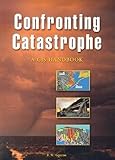Confronting catastrophe : a GIS handbook / R.W. Greene.
Material type: TextPublication details: Redlands, Calif. : ESRI Press, c2002.Description: xiv, 140 p. : col. ill., maps ; 23 cmISBN:
TextPublication details: Redlands, Calif. : ESRI Press, c2002.Description: xiv, 140 p. : col. ill., maps ; 23 cmISBN: - 1589480406
- 363.34/8/0285 21
- 363.3480285 21
- HV551.2 .G74 2002
| Item type | Current library | Collection | Call number | Status | Date due | Barcode | |
|---|---|---|---|---|---|---|---|
 Books
Books
|
Australian Emergency Management Library | BOOK | 363.3480285 GRE (Browse shelf(Opens below)) | Available | 900099905 | ||
 Books
Books
|
Australian Emergency Management Library | BOOK | 363.3480285 GRE (Browse shelf(Opens below)) | Available | 900166564 |
Browsing Australian Emergency Management Library shelves, Collection: BOOK Close shelf browser (Hides shelf browser)

|
No cover image available No cover image available |

|

|

|
No cover image available No cover image available | No cover image available No cover image available | ||
| 363.3480259363 HOW How can I help my community in a disaster? : a guide to emergency volunteerism in Wellington. | 363.3480259455 COM Communications directory / | 363.3480285 GIS Disaster response : GIS for public safety. | 363.3480285 GRE Confronting catastrophe : a GIS handbook / | 363.3480285 GRE Confronting catastrophe : a GIS handbook / | 363.3480285 GUI Guidelines for tracing in disasters. | 363.3480285 INF Information networks in international disaster assistance. |
Ch. 1. Identification and planning -- Ch. 2. Mitigation -- Ch. 3. Preparedness -- Ch. 4. Response -- Ch. 5. Recovery.
"GIS technology has become the one unifying component that every community can use to plan for, respond to, and recover from, major disasters?whether these are natural events such as hurricanes, or the man-made destruction of terrorist attack. By giving responders and disaster managers a way to analyze each stage of a disaster visually and to synthesize complex information sets, GIS permits swifter decision-making and better communication. [This book] is a hands-on guide for both emergency-operations and GIS managers, as well as for government decision-makers, on ways to best implement GIS into disaster management." -- BOOK JACKET.
There are no comments on this title.

